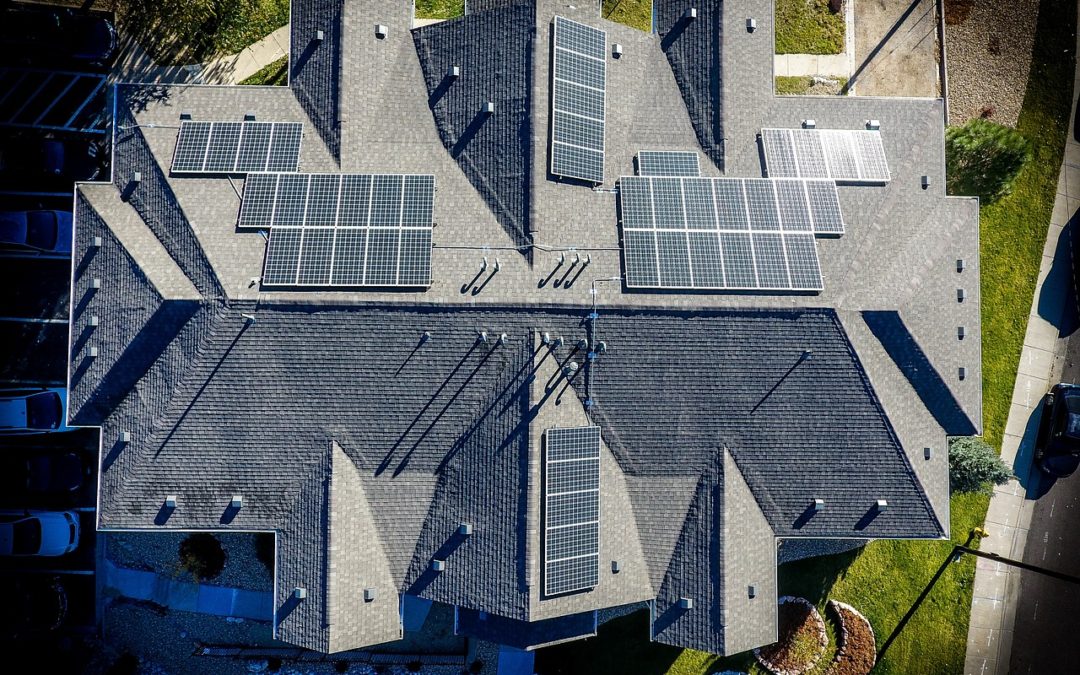The world is undergoing a remarkable energy revolution, with solar power leading the charge towards a sustainable future. As solar energy becomes increasingly accessible, the choice of solar panels plays a pivotal role in harnessing the sun’s abundant energy. In this extensive guide, we’ll delve deep into the fascinating world of solar panels, comparing and contrasting three primary types: monocrystalline, polycrystalline, and thin-film. By the end, you’ll have a comprehensive understanding of which type is best suited for your specific needs.
1. Monocrystalline Solar Panels
Efficiency and Elegance
Monocrystalline solar panels, often referred to as mono-Si panels, are renowned for their efficiency and elegant appearance. They are created from a single crystal structure, which enables them to have high energy efficiency. These panels are ideal for those with limited space or a preference for a sleek and sophisticated solar array.
Advantages of Monocrystalline Panels
- Exceptional Efficiency: Monocrystalline panels are renowned for their exceptional efficiency, ranking as the top performers among all solar panel types. They have the capability to convert as much as 22% of incoming sunlight into electricity.
- Space-Effective: Thanks to their impressive efficiency, mono-Si panels demand less space to produce the same electricity output as other panel varieties. This space-saving characteristic makes them an excellent choice for installations with limited available space.
- Longevity: Monocrystalline panels are celebrated for their long lifespan, often exceeding 25 years or more. This remarkable durability ensures a reliable and enduring investment in solar energy.
- Aesthetically Pleasing: With their sleek, uniform appearance and shades of black or dark blue, monocrystalline panels are often hailed as the most visually appealing choice. They seamlessly integrate into the aesthetics of residential properties, enhancing curb appeal and overall design.
Monocrystalline panels are the gold standard for residential applications, where space constraints and aesthetics are paramount. The high efficiency of mono-Si panels ensures that you can generate a substantial amount of electricity even with limited rooftop space. Additionally, their sleek design blends seamlessly with modern homes, enhancing curb appeal.
2. Polycrystalline Solar Panels
Cost-Effective and Versatile
Polycrystalline solar panels, also referred to as poly-Si panels, are recognized for their cost-efficiency and adaptability. These panels are crafted from multiple crystal structures, which, while slightly reducing their efficiency compared to monocrystalline panels, makes them a more budget-friendly option. For individuals seeking a solar solution that fits their budget or those with ample rooftop space, poly-Si panels represent an excellent choice.
Advantages of Polycrystalline Panels
Cost-Effectiveness: Polycrystalline panels, often denoted as poly-Si panels, present a cost-effective solar energy solution. Their affordability stems from the lower production costs, making them an appealing choice for budget-conscious individuals interested in adopting solar power.
- Decent Efficiency: While poly-Si panels may not reach the same efficiency levels as monocrystalline counterparts, they maintain respectable efficiency rates, typically ranging between 15% to 18%. This level of efficiency ensures that they can harness a significant amount of solar energy, contributing to electricity generation.
- Versatility: One of the strengths of polycrystalline panels lies in their versatility. They exhibit robust performance in various climate conditions, adapting well to diverse environmental settings. Furthermore, they tend to fare better in high-temperature environments when compared to monocrystalline panels, which can experience more substantial efficiency reductions.
- Eco-Friendly Manufacturing: The production process of polycrystalline panels is marked by its eco-friendliness. It generates less waste in comparison to the manufacturing process of monocrystalline panels. This eco-conscious approach aligns with sustainability goals, promoting responsible resource management and reducing environmental impact.
Polycrystalline panels enjoy popularity among individuals and businesses seeking an equilibrium between cost-effectiveness and efficiency. This balance makes them a favored choice for both residential and commercial solar installations. If you possess sufficient rooftop space and value cost-conscious decisions while prioritizing environmentally responsible options, then polycrystalline panels can be a judicious selection, particularly due to their eco-friendly manufacturing process.
3. Thin-Film Solar Panels
Flexibility and Innovation
Thin-film solar panels are the outliers in the realm of solar panels, presenting distinctive advantages that distinguish them from conventional counterparts. Unlike their crystalline counterparts, thin-film panels employ a slender layer of photovoltaic material applied onto a substrate, which can be materials like glass or plastic. This innovative approach widens the horizons for creative solutions and fosters innovation in the solar industry.
Advantages of Thin-Film Panels
- Flexibility: Thin-film panels are lightweight and flexible, allowing them to be used in unconventional applications, such as curved surfaces or even clothing.
- Low Production Costs: The manufacturing process for thin-film panels is less resource-intensive, which can lead to lower production costs.
- Amorphous Silicon (a-Si): Amorphous silicon thin-film panels are particularly efficient in low-light conditions, making them suitable for regions with less sunlight.
- Innovative Possibilities: Thin-film technology is continuously evolving, with the potential for further breakthroughs in efficiency and application.
Thin-film panels open the door to a world of possibilities. Their flexibility allows for unconventional applications, making them suitable for solar-integrated building materials, portable solar chargers, and even solar-powered clothing. If you’re an innovator or have unique solar needs, thin-film panels might hold the key to unlocking your solar ambitions.
Suitability for Various Applications
Choosing the Right Panel for Your Needs
The choice of solar panel type should align with your specific energy needs and available space. Here’s a breakdown of which panel type is best suited for various applications:
- Residential Rooftops: Monocrystalline panels are ideal for residential rooftops due to their high efficiency and space-saving design.
- Commercial Installations: For larger installations where cost is a significant consideration, polycrystalline panels provide a cost-effective solution.
- Off-Grid Systems: Thin-film panels, particularly amorphous silicon, can perform well in off-grid systems where space is not a constraint.
- Portable Solar Chargers: Thin-film panels’ flexibility makes them perfect for portable chargers and backpacking solar kits.
- Solar Farms: Large-scale solar farms often opt for monocrystalline panels to maximize energy production.
Choosing the right panel type is crucial for optimizing your solar system’s performance. Consider your specific requirements, budget, and available space when making your decision.
Making the Decision
Factors to Consider
When faced with the critical decision of selecting the most suitable type of solar panels for your specific needs, it is imperative to consider a comprehensive set of essential factors:
- Efficiency: Begin by conducting a thorough assessment of your energy requirements. Determine the precise amount of electricity you need to generate and establish your desired level of energy efficiency. This step is foundational as it sets the performance expectations for your solar panel system.
- Space: Evaluate the available space for your solar installation meticulously. Whether you have limited rooftop space or a more expansive ground area, understanding your spatial constraints or advantages is pivotal. This assessment will influence the type and configuration of solar panels that can be installed.
- Budget: Clearly define your budget for the solar panel system. Determine the total investment you are willing to allocate to your solar energy project, accounting for upfront costs and potential long-term savings. This financial framework will help guide your choices and ensure they align with your financial capacity.
- Climate: Examine the prevailing climate and weather conditions in your specific location. Factors to consider include the availability of sunlight, seasonal temperature fluctuations, and the potential for shading issues that might affect your solar panels’ performance. Understanding your local climate is vital for estimating energy generation potential accurately.
- Aesthetics: Reflect on the significance of aesthetics in your decision-making process. Decide whether the visual appearance of your solar panels holds a high priority or if functionality takes precedence in your considerations. This aspect is particularly important for residential installations where curb appeal matters.
- Innovation: Explore your interest in innovative solar applications. Assess your openness to adopting cutting-edge technologies or pursuing unconventional uses for solar panels. Innovations in solar technology can offer unique benefits, such as enhanced efficiency or versatile applications.
By methodically considering these factors, you can make a well-informed decision tailored to your specific requirements. This thoughtful approach ensures that your choice aligns perfectly with your needs, maximizing the success and effectiveness of your solar energy project.
Conclusion
In the pursuit of a sustainable future powered by solar energy, the selection of solar panels emerges as a pivotal determinant. Whether your primary focus lies in efficiency, cost-effectiveness, or adaptability, there exists a type of solar panel suited to meet your distinct requirements. By comprehending the disparities between monocrystalline, polycrystalline, and thin-film panels, you can navigate this decision-making process with knowledge and insight, ensuring that your choice aligns seamlessly with your energy objectives. Therefore, seize the opportunity to harness the boundless potential of solar power and embark on a path towards a cleaner, more environmentally sustainable energy future, powered by the sun. Choose wisely and embrace the promise of a brighter and greener tomorrow.

